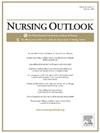通过虚拟现实塑造护理人力:护理课程实施的陷阱和可能性
IF 3.7
2区 医学
Q1 NURSING
引用次数: 0
摘要
护理人员的担忧正在影响护理学院和学校如何有效地实施模拟等教学策略。随着护理短缺的加剧,越来越多的慢性和复杂的条件,以及病人的情况出现,学生护士的教育必须适应,以帮助这一日益增长的关注。虚拟现实模拟(VR-Sim)是一种被认为是护理教育的模式,它在文献中显示出好处。然而,人们对护理项目的实施过程知之甚少。目的探讨VR-Sim在本科护理专业的实施过程。由卫生资源和服务管理局(HRSA)资助的一项拨款提供了VR-Sim模式。为学生护士提供VR-Sim和传统模拟模式(如高保真人体患者模拟器和标准化患者接触)的同步体验。参与VR-Sim体验的184名实习护士对VR-Sim的使用给出了不同的评价,一些人认为VR-Sim有益,而另一些人则表示担忧。本文讨论了实现VR-Sim体验的缺陷和可能性,并提供了有关实现过程和未来考虑事项的见解。结论需要继续发展VR-Sim,为护理教育提供这种模式。本文章由计算机程序翻译,如有差异,请以英文原文为准。
Shaping the nursing workforce through virtual reality: Pitfalls and possibilities of implementation in a nursing curriculum
Background
Nursing workforce concerns are shaping how colleges and schools of nursing effectively implement teaching strategies like simulation. With the growning nursing shortage, more chronic and complex conditions, and situations for patients arising, the education of student nurses must adapt to help this growning concern. Virtual reality simulation (VR-Sim) is a modality considered for nursing education, and it shows benefits in the literature. However, little is known about the implementation process within a nursing program.
Purpose
This paper aims to illustrate the process of implementing VR-Sim in an undergraduate nursing program.
Methods for Curricular Enhancement
A grant funded by the Health Resources and Services Administration (HRSA) provided the VR-Sim modality. Student nurses were provided with concurrent experiences in VR-Sim and traditional simulation modalities, such as high-fidelity human patient simulators and standardized patient encounters.
Discussion
The 184 student nurses engaged in the VR-Sim experience provided mixed evaluations for its use, with some stating the VR-Sim was beneficial, while others had concerns. The pitfalls and possibilities of implementing the VR-Sim experience are addressed, and insights on the implementation process and future considerations are offered.
Conclusion
Continued development of VR-Sim is needed to provide this modality for nursing education.
求助全文
通过发布文献求助,成功后即可免费获取论文全文。
去求助
来源期刊

Nursing Outlook
医学-护理
CiteScore
6.20
自引率
7.00%
发文量
109
审稿时长
25 days
期刊介绍:
Nursing Outlook, a bimonthly journal, provides innovative ideas for nursing leaders through peer-reviewed articles and timely reports. Each issue examines current issues and trends in nursing practice, education, and research, offering progressive solutions to the challenges facing the profession. Nursing Outlook is the official journal of the American Academy of Nursing and the Council for the Advancement of Nursing Science and supports their mission to serve the public and the nursing profession by advancing health policy and practice through the generation, synthesis, and dissemination of nursing knowledge. The journal is included in MEDLINE, CINAHL and the Journal Citation Reports published by Clarivate Analytics.
 求助内容:
求助内容: 应助结果提醒方式:
应助结果提醒方式:


